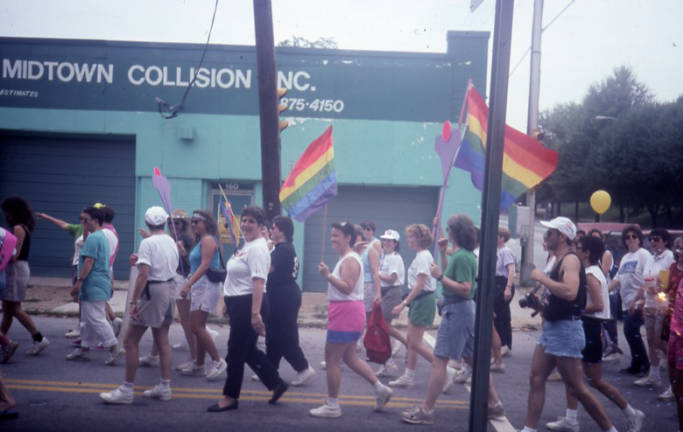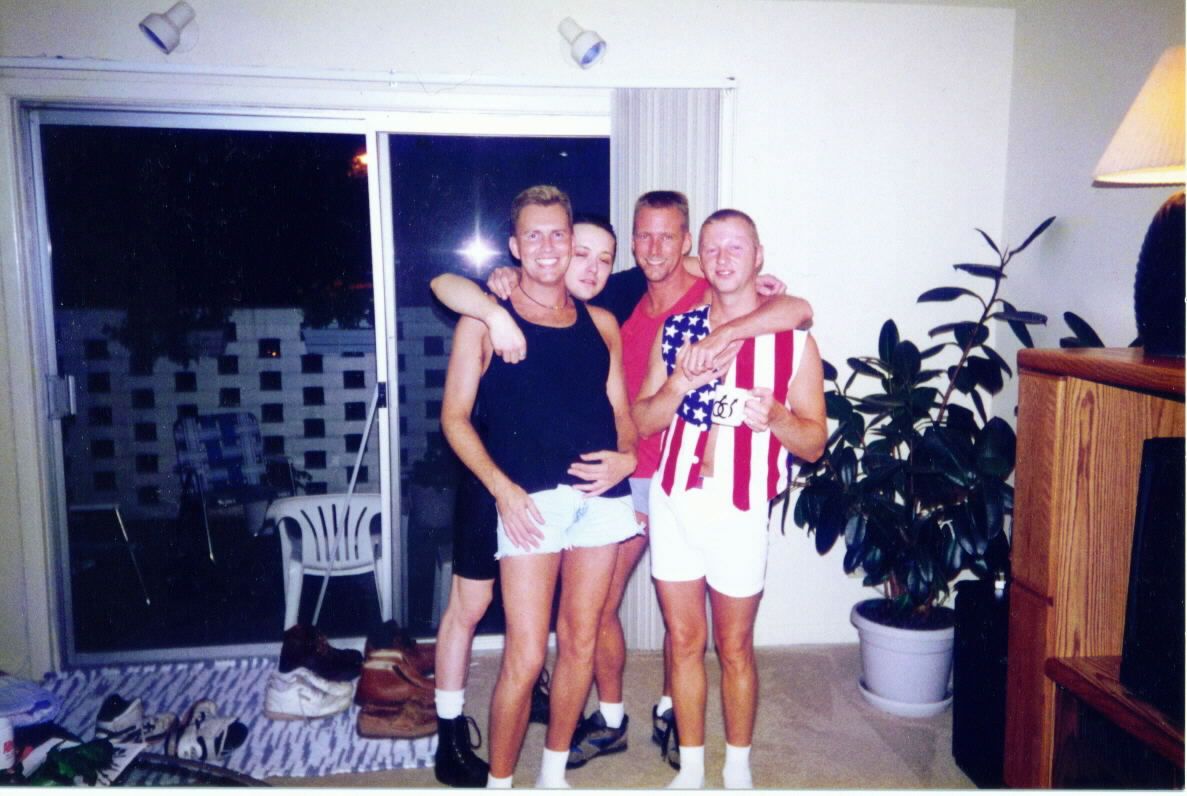Queer Midtown: How Atlanta Became an Epicenter of Gay Life
EXCLUSIVELY FOR MIDTOWNATL.COM
Published: 04/06/23

BY JASON ARNOLD
Atlanta has long held the nickname of the gay epicenter of the South, due to so many members of the LGBTQ+ community from small towns in neighboring states moving to Atlanta to find their place among their kindred spirits. For decades, queer people flocked to Midtown for weekend jaunts to some of the South’s most legendary bars, (Backstreet, anyone?) and Pride festivities, first in June to and later when the events were moved to October to coincide with “National Coming Out Day.” Midtown and Atlanta were synonymous with being gay, and though the community is more spread out over the metro area today, Midtown, with its iconic rainbow crosswalk, is still regarded as the center of gay Atlanta.
Atlanta Had Its Own Stonewall
Long before the pride festivals, bars and restaurants, the first recorded instance of what we would consider Atlanta’s gay history goes all the way back to the “Cotton States and International Exposition of 1895,” with the first known female impersonation taking place in Piedmont Park.
But the singular event that would trigger the gay rights movement in Atlanta is also one of the least known. Just six short weeks after the Stonewall Riots in New York in 1969, “Atlanta’s Stonewall” would take place in the Ansley Mall Mini Cinema. At the time, the Mini Cinema showed indie films, such as Andy Warhol’s "Lonesome Cowboy," a movie with gay themes. On August 5, 1969, police raided the screening and all 70 patrons in attendance were arrested. From this singular event, the Georgia Gay Liberation Front was created, which ultimately led to the first Gay Pride March held in 1971, with 100 activists in attendance in Piedmont Park.
Come For a Visit, Call It Home
Atlanta resident Chuck Turner and his husband of nearly 40 years, Chip Willett, decided to make their Atlanta visits a permanent move in April 1997, after visiting and attending Pride events since 1995.
“Prior to moving to Atlanta, our gay life was suppressed due to the fact we lived in a conservative city,” Turner said. “Our periodic weekend trips led to our move to Atlanta in 1997. We fell in love with the freedom, diversity, and quality of life for gay people."

“I moved to Atlanta in 1993 from Jacksonville, Florida, which was [socially] becoming more and more like South Georgia,” said Calvin Cromer, Turner and Willett’s longtime friend. “I came here because I had friends who lived here. I was like a kid in a candy store! There were so many bars and clubs open every night of the week.”
Their story is common among many residents who came to Atlanta to live their lives openly, surrounded by opportunities and a sense of community they could not get anywhere else.
Local Publications and Stores Helped Knit the Community Together
Long before the internet, Atlanta had publications serving gay readership like David Magazine, Etcetera Magazine and even its own version of the gay Yellow Pages that would help members of the LGBTQ+ community find doctors, lawyers, real estate agents and other gay-owned and gay-friendly businesses. You could find them on stands across the city at bars like Burkhart’s (the former location recently became the new home to the Atlanta Eagle) or outside Brushstrokes (now Brushstroke Pleasures), an Atlanta institution located in Ansley Mall since 1989, sellinggay-themed movies, books, clothing and other sundries in one location safely and discreetly. Even today, Ansley Mall and the surrounding shops are a crucial part of the gay Midtown–area experience.
Midtown AKA “the Gayborhood”
Drive through the center of Midtown today and it is a very different sight than it was in the 1980s and 90s. Many of the older buildings have been torn down and replaced with gleaming high rises, a sign of the growth and popularity of the neighborhood. Midtown Atlanta is a vibrant, cultural area in the city, one filled with the history of LGBTQ+ Atlanta. Gone are the historic bars such as Backstreet, the Armory, the Centaur Club and the Cove.
Although they may no longer be here, their legends live on and are honored by the City of Atlanta. The permanent rainbow crosswalk at Piedmont Avenue and 10th Street was established in 2017 to mark the significance of the venerable intersection that has been home to many LGBTQ+ establishments and to honor the one year anniversary of the Pulse nightclub tragedy in Orlando that reverberated through gay communities everywhere, including in Atlanta. Now LGBTQ+ Atlantans have spread out to different parts of the metro area, but Midtown has always been associated with our history and those who fought alongside us. Nothing speaks louder to this than on July 30, 2020, when the hearse carrying longtime Congressman John Lewis paused at the rainbow crosswalk. During his tenure, Congressman Lewis was a vocal advocate for LGBTQ+ rights.
The Atlanta of 1969 has given way to the Atlanta of 2023, which proudly boasts the Mayor’s Division of LGBTQ Affairs, headed by Malik Brown, and a perfect score of 100% on the Human Rights Campaign’s Municipal Equality Index since 2013.
For more information on these events in Midtown history, check out these sources:
About the Author
Jason Arnold marched in his first Atlanta Pride Parade in 1992 and has attended, almost without fail, every Pride Parade since. He calls Midtown home during his 9-5 life and proudly crosses the rainbow crosswalk each morning to get his iced coffee.